A Well Fitting Jacket

Are you sick of hearing us say that fit is everything? Then sorry, today is not your day. Fit is everything. It’s the most basic building block of a great suit. If you don’t get it right from the very beginning, even the most expensive suit will look like something your blind aunt picked out for you when you were twelve. The right jacket should give you a full range of motion, both buttoned and unbuttoned, and should suit your body type. If you’re shorter or stockier, stick to single-breasted. If you’re tall and lean, experiment with double-breasted. If you’re carrying little extra around your middle, a jacket with a lower button will elongate your silhouette.
Correct Trouser Length
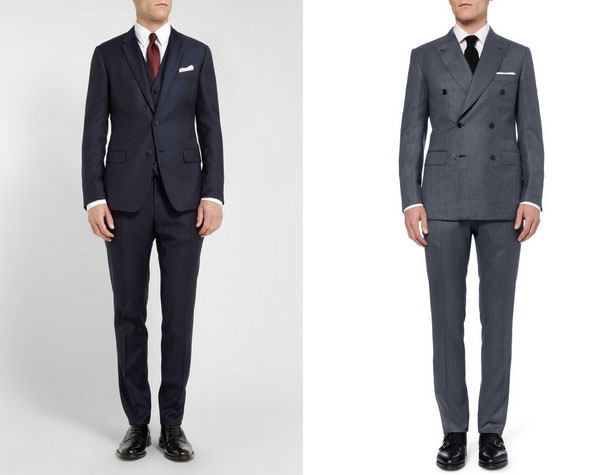
Tailoring your trousers is a must. Up top, they should sit near your waist – not your hips. You should be able to fit a finger – but not more – into the waistband comfortably. Down below, your ankles should be completely covered (even if you have spectacular taste in socks) and the hems should just brush the top of the heel. This ensures the trousers drape properly and maintain their shape. Traditional tailoring dictates one break at the front of trousers and a straight line down the back. There should be no excess fabric pooling around your ankles. If you want a more modern look, you can opt for shorter trousers that have a half-break or no break at all, and show off your shoes and a sliver of sock.
Sleeve Length To Cuff Length Ratio
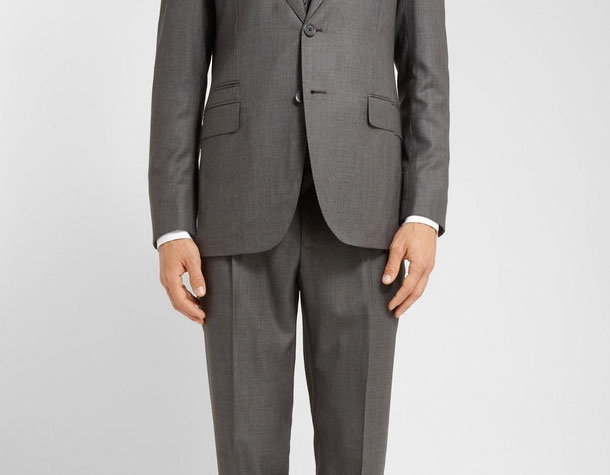
Like a woman’s little black dress, your jacket sleeves should reveal something but not too much. Aim for showing off about 1.5 cm or a half inch of shirt cuff. On the shirt side of things, your cuffs should not slide up when you stretch your arms. A good tailor will measure both arms separately because almost no one is symmetrical. If you’re wearing a button-cuff shirt, your sleeves should touch your wrists. If you’re rocking a French-cuff shirt, the cuffs should break a little further down. And never, ever forget to remove the label on the left sleeve of your jacket before wearing a new suit.
Jacket And Shirt Button Etiquette
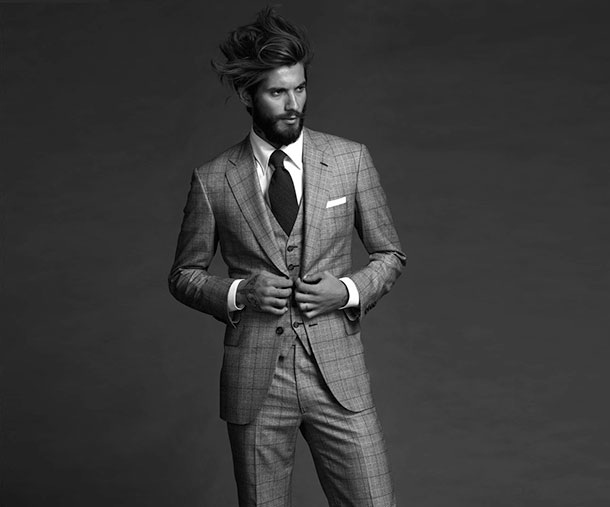
Like a lot of etiquette lessons, jacket and shirt button protocol should be simple to follow, yet tons of guys still get it wrong.
Rule #1: Always unfasten your jacket buttons when you sit. No exceptions.
Rule #2: Always keep your cuff buttons fastened. Also no exceptions.
Rule #3: Button all the buttons on your dress shirt. Still no exceptions. (Unless you’re wearing no tie of course)
Rule #4: For two-button jackets, button the top button only. For three-button jackets, leave the bottom undone, fasten the middle, and choose whichever option you prefer for the top.
Rule #5: If you’re going the double-breasted route, keep the top and inside buttons fastened at all times, but always leave the bottom undone.
Great Shirt Collar & Well Tied Tie
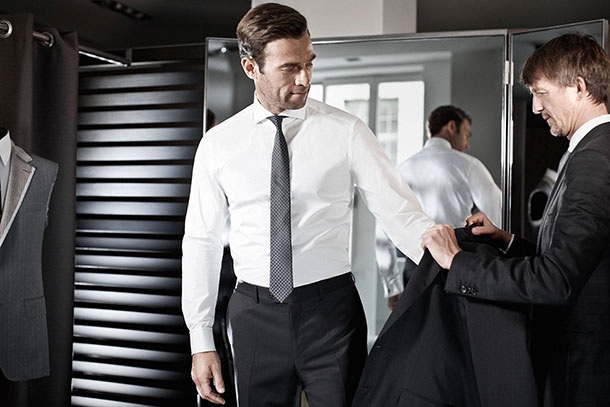
Getting it right in the neck region requires a few elements to work together. First, as always, is the fit. You should be able to fit a single finger between your neck and the collar of your shirt, but no more than that. A small amount of shirt collar should be visible above the jacket. Shape and size are also important. Your collar should complement your face as well as the kind of knot you tie in your neckwear. Your tie knot should fill the space completely, so wider knots are better suited to spread or cutaway collars. To maintain formality, your tie knot should be balanced – asymmetrical knots are more casual that symmetrical knots. If you’re going without a tie entirely, keep the collar on the smaller side.
Well Polished Shoes And Matching Belt

The matching shoes and belt are a tried-and-true style rule. A black belt is almost always a safe bet, but brown will be more appropriate with khaki suits and certain shades of grey. The buckles should match any other accessories you’re wearing, e.g. a watch. Footwear can present a bit of a conundrum. With all the options now available for men, your shoe collection could easily rival your girlfriend’s. How do you choose? Learn your way around the different kinds of men’s shoes. Oxfords, monk straps, brogues, derbies, loafers, Chelsea boots…all are possibilities, provided they fit the suit and the formality of the occasion.
Add Detail With Accessories
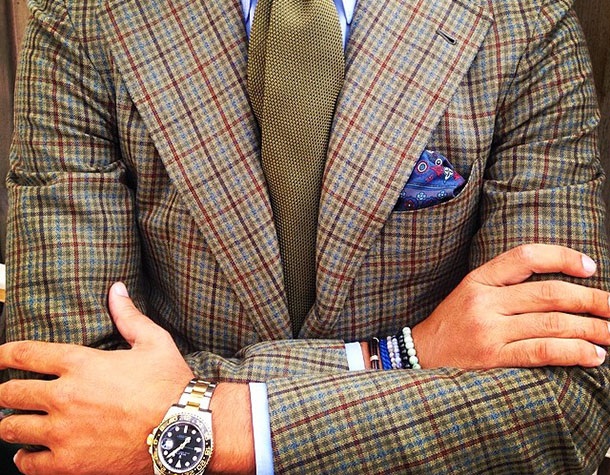
Accessories are one of the easiest ways to turn an average outfit into something extraordinary, but consider them carefully. Your possible options include pocket squares, cufflinks, tie bars and lapel pins, but if you try to wear them all at once, you’ll end up looking like the sartorial version of a hoarder. Err on the side of restraint. The same goes for timepieces. If you’re wearing a watch with your suit, make sure it’s something elegant and sophisticated, not the bulky, shock-resistant number you wear to the gym.
And lastly…
Everything Freshly Pressed
And finally, last but not least, make sure everything is freshly pressed. Nothing ruins a stylish look like a cascade of wrinkles (just ask a Real Housewife’s face).

No hay comentarios:
Publicar un comentario